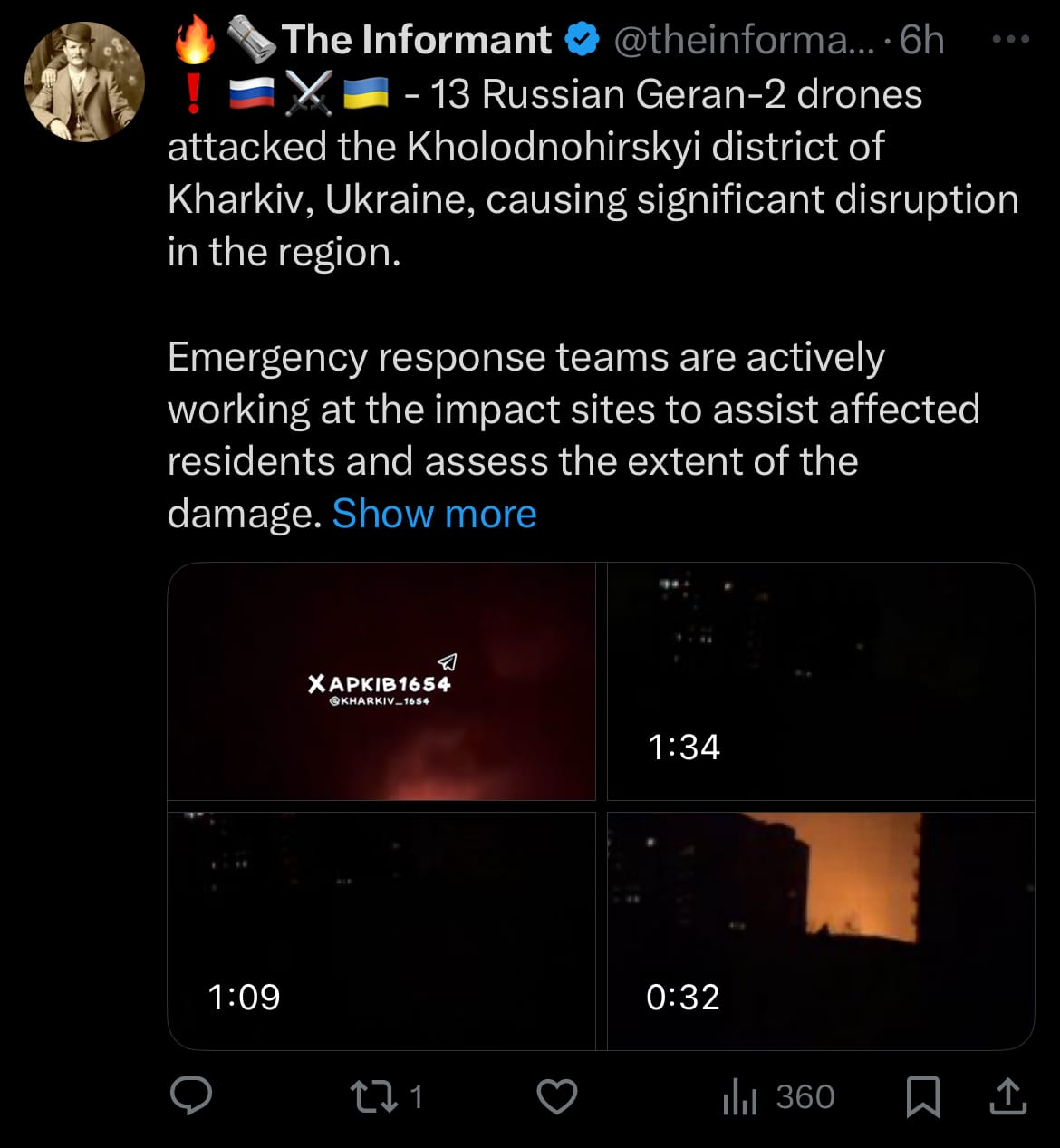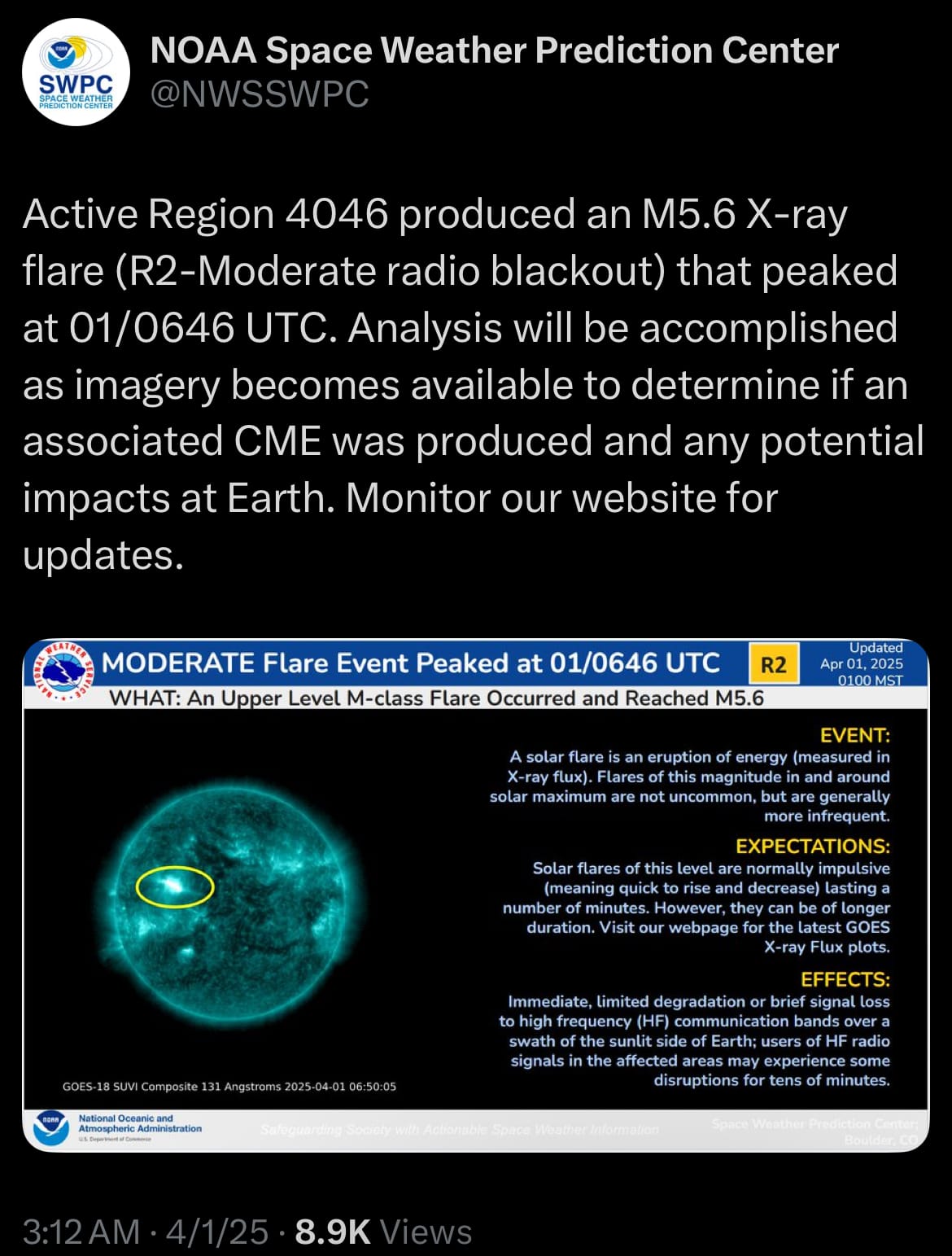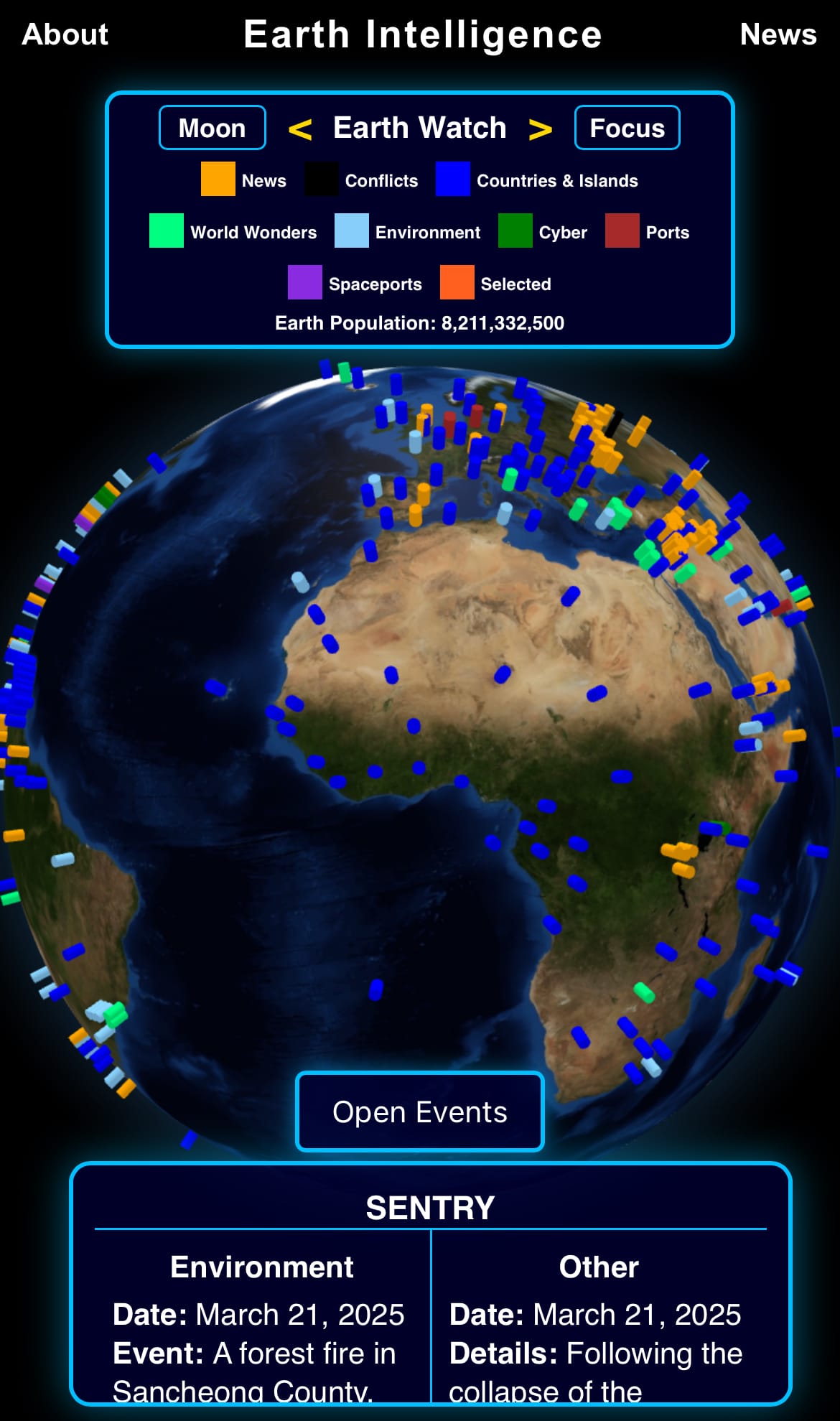Wednesday☕️

Economics & Markets:
- Yesterday’s U.S. stock market:

- Today’s commodity market:

- Today’s crypto market:

Geopolitics & Military Activity:
- Over the past 36 hours, multiple Russian Geran-2 drones targeted the Kholodnohirskyi district of Kharkiv, Ukraine, leading to disruptions in the area. The drones impacted various sites within the district, affecting residential zones, infrastructure, and electrical systems, according to local sources. Power outages and physical damage to buildings were reported following the strikes. The Geran-2 drones, noted for their long-range capabilities and cost-effectiveness, have been employed in similar actions during the war. Kharkiv, situated about 30 kilometers from the Russian border, has been involved in multiple such incidents over time.

- Emergency response units, including firefighters and medical teams, have been deployed to the affected locations to manage the damage and provide assistance. Work is ongoing to assess the extent of the damage and restore disrupted services like electricity. Kharkiv, Ukraine’s second-largest city, is recognized for its industrial and strategic importance, which has drawn attention during the conflict. Specific details regarding casualties or the complete scale of the impact have not been fully disclosed by officials at this stage. Response efforts continue as the situation develops, with local teams addressing the immediate needs arising from the strikes.
Environment & Weather:
- The National Weather Service’s Space Weather Prediction Center (NWSSWPC) reported that on April 1, 2025, a sunspot called Active Region 4046 unleashed an M5.6 X-ray flare, peaking at 01/0646 UTC. This flare, classified as an R2-Moderate radio blackout, briefly disrupted high-frequency (HF) radio signals on Earth’s sunlit side, potentially affecting aviation or emergency communications for about an hour. The NWSSWPC is still checking if this flare also produced a coronal mass ejection (CME)—a massive burst of solar material that could reach Earth in 1-3 days if aimed our way. If a CME is confirmed, it might cause geomagnetic storms, impacting satellites, power grids, or creating auroras, but no effects are certain yet. Meanwhile, an ongoing S1-Minor radiation storm, noted on April 1 at 11:04 EDT, started March 28 and peaked at 2039 pfu the prior day. This separate event, not tied to the flare, shows the Sun’s recent activity and poses a minor risk of satellite glitches, though it’s not doing much on Earth’s surface right now. These events are tracked using satellites like GOES and observatories like SDO, which watch the Sun’s activity in real time.

- Solar events like these vary in strength and timing. Flares, such as this M-class (medium) one, hit Earth with X-rays and UV light in just 8 minutes, causing radio blackouts ranked R1 (minor) to R5 (extreme)—R2 is noticeable but not huge. CMEs, if they occur, travel slower at 300-3000 km/s, arriving in 1-3 days, and can spark geomagnetic storms rated G1 (minor) to G5 (extreme), potentially disrupting power or satellites and lighting up auroras. Radiation storms, like the current S1 (weakest of S1-S5), bring high-energy particles within hours, lingering for days and mainly bugging satellites. Right now, the flare’s quick radio effect and the minor radiation storm are the main action—without a confirmed CME, bigger impacts aren’t set, but a strong one could shift that, depending on its size and speed.

Science & Technology:
- Figure has collaborated with BMW to integrate its Figure 02 humanoid robots into production operations at BMW’s Spartanburg, South Carolina facility, transitioning from testing to active use. Since their initial deployment in August 2024, these robots have been tasked with autonomously placing sheet metal parts into fixtures for chassis assembly, a process requiring consistent accuracy. They currently handle up to 1,000 placements per day, supported by Figure’s Helix AI, which combines vision, language processing, and action execution on low-power GPUs. According to Figure, this system has improved the robots’ speed by 400% and increased their success rate sevenfold, indicating their adaptation to a real factory environment.

- This deployment reflects a wider movement within the humanoid robot industry, where manufacturing is being used to develop and refine robotic capabilities. Companies are exploring practical applications to enhance autonomy and efficiency, with potential implications for broader use. For instance, Tesla is working on its Optimus robot for factory tasks, Boston Dynamics is developing Atlas for industrial purposes, and Agility Robotics is testing Digit in Amazon warehouses for activities like tote recycling.
Statistic:
- Largest public defense contractors by market capitalization:
- 🇺🇸 RTX: $177.36B
- 🇺🇸 Honeywell: $138.72B
- 🇫🇷 Safran: $110.22B
- 🇺🇸 Lockheed Martin: $105.23B
- 🇺🇸 Northrop Grumman: $74.27B
- 🇺🇸 General Dynamics: $73.57B
- 🇩🇪 Rheinmetall: $64.66B
- 🇬🇧 BAE Systems: $60.03B
- 🇫🇷 Thales: $55.47B
- 🇺🇸 L3Harris Technologies: $39.37B
- 🇮🇳 Hindustan Aeronautics: $32.52B
- 🇮🇹 Leonardo: $28.65B
- 🇳🇴 Kongsberg Gruppen: $26.32B
- 🇫🇷 Dassault Aviation: $26.10B
- 🇮🇳 Bharat Electronics: $23.48B
- 🇸🇪 SAAB AB: $21.67B
- 🇮🇱 Elbit Systems: $17.29B
- 🇹🇷 Aselsan: $14.40B
- 🇺🇸 Leonardo DRS: $8.71B
- 🇩🇪 Hensoldt: $7.97B
- 🇺🇸 Huntington Ingalls Industries: $7.93B
- 🇮🇳 Bharat Dynamics: $5.28B
- 🇪🇸 Indra Sistemas: $5.19B
- 🇺🇸 Kratos Defense & Security Solutions: $4.47B
- 🇺🇸 AeroVironment: $3.43B
History:
- Solar flares, coronal mass ejections (CMEs), and radiation storms have a long history of impacting Earth, with their earliest traces dating back to ancient times. In 364 BC, Chinese astronomers first recorded sunspots—dark spots on the Sun linked to solar activity—marking one of the earliest hints of these phenomena, though their full nature wasn’t understood. Centuries later, around 774-775 AD, a massive solar storm left a carbon-14 spike in tree rings, suggesting an event possibly ten times stronger than anything seen in modern times, even though no one directly observed it. By the 1700s, scientists began noticing geomagnetic storms through compass irregularities, laying the groundwork for connecting solar events to Earth’s magnetic field. Then, on September 1, 1859, British astronomers Richard Carrington and Richard Hodgson witnessed a colossal solar flare—the Carrington Event—followed by a CME that fried telegraph systems worldwide and lit auroras as far south as the Caribbean, making it the largest recorded solar storm in history.
- Tracking these events evolved alongside scientific discovery. In the 1800s, after the Carrington Event tied solar flares to magnetic disruptions, observatories like Kew began using magnetometers to systematically monitor Earth’s magnetic field. Telescopes also started catching flares directly, giving a clearer picture of the Sun’s behavior. By the 1930s, cosmic ray detectors picked up solar energetic particle (SEP) events, marking the start of radiation storm tracking. The 1970s brought a leap forward with satellites: the Orbiting Solar Observatory 7 (OSO-7) spotted the first CME in 1971 using a coronagraph, and the Geostationary Operational Environmental Satellites (GOES) began measuring flare X-rays. In 1995, the Solar and Heliospheric Observatory (SOHO) enhanced CME detection with its LASCO coronagraph, while modern tools like the Solar Dynamics Observatory (SDO), launched in 2010, and the Parker Solar Probe, active since 2018, now deliver real-time, detailed solar data. This journey—from ancient sunspot sketches to today’s space-based tech—shows how tracking has grown into a precise science, decoding the Sun’s power and its effects on Earth.
Image of the day:

Thanks for reading!
Earth is complicated, we make it simple.
Click image to view the Earth Intelligence System:



Support/Suggestions Email:
earthintelligence@earthintel.news




